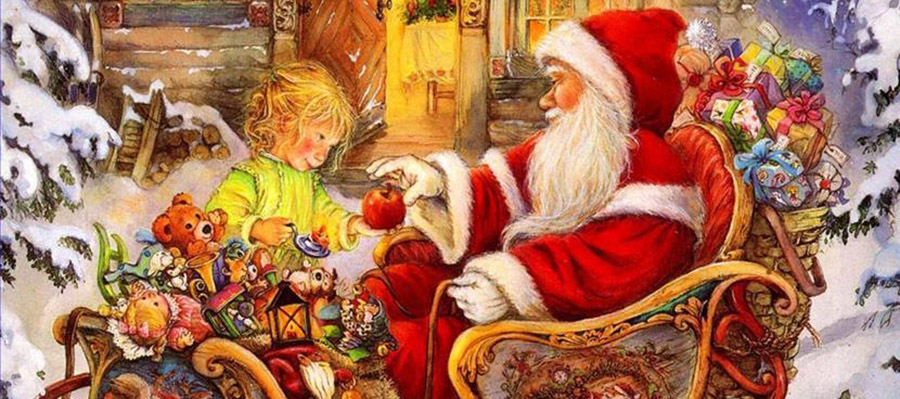Whether you know him as Saint Nicholas, Father Christmas, or simply Santa Claus, this figure has come to symbolize Christmas for many people. This mythical figure has many points of origin, from history, folklore and legend. Children look forward to his visits, and the story is that he travels the world, visiting all good girls and boys, and leaving them gifts. Let’s take a look at some of the stories surrounding this symbolic figure.
The Historic Saint Nicholas
Saint Nicholas of Myra was a 4th century Greek bishop in a province of the Byzantine Empire. He was devoted to his religion from an early age. When his parents died in an epidemic, he went to be raised by his uncle, the bishop of Patara. The bishop trained the young Nicholas as a liturgical reader and later ordained him as a priest.
The most famous story about Saint Nicholas (and perhaps one that associated him with gift-giving), was the story of him providing for three unmarried girls whose father was too poor to provide them with a dowry, almost certainly condemning them to a life of prostitution. Though Saint Nicholas had decided to help them, he was too modest to do it in public, so under the cover of night, he threw three purses of gold into the window of the man’s house to provide a dowry for the girls.
Germanic Europe
Another source for the origin of Santa Claus was in the celebration by the Germanic pagans of Yule. The god Odin was often theorized as having influenced concepts of Santa Claus, as he possessed a long, white beard and rode his eight-footed steed Sleipnir to visit his people with gifts during the Yuletide period.
Sinterklaas
In the Netherlands, Santa Claus is known as de Kerstman, or ‘the Christmas man’, but for children, Sinterklaas is the gift giver, and gifts are given on Sinterklaas day. He is often accompanied by Zwarte Piet, or ‘Black Peter’. Sinterklaas is dressed in a red cape, a white alb and a red mitre with the long ceremonial shepherd’s staff of the church. He is stately and serious, with a long white beard and white hair.
Father Christmas
In England, this jolly green- or scarlet-robed man was the symbol of good cheer, peace, joy, and good revelry. He dates as far back as the reign of Henry VIII. The most famous depiction of Father Christmas was as the ‘Ghost of Christmas Present’ in Charles Dickens’ A Christmas Carol, who went about the streets with Scrooge to sprinkle the essence of Christmas onto the people of London.
Modern Times
The most famous depiction of Santa Claus comes from the 1823 poem which is still read aloud on Christmas Eve to children: A Visit from St. Nicholas, and better known as The Night Before Christmas.This poem set in stone the appearance and personality of the modern Santa Claus, along with his sleigh and ‘eight tiny reindeer.’
Other works that popularized Santa was The Life and Adventures of Santa Claus, a children’s book by L. Frank Baum published in 1902, and various images of Santa Claus, including the famous illustrations for Coca Cola advertisements in the early part of the 20th century.




